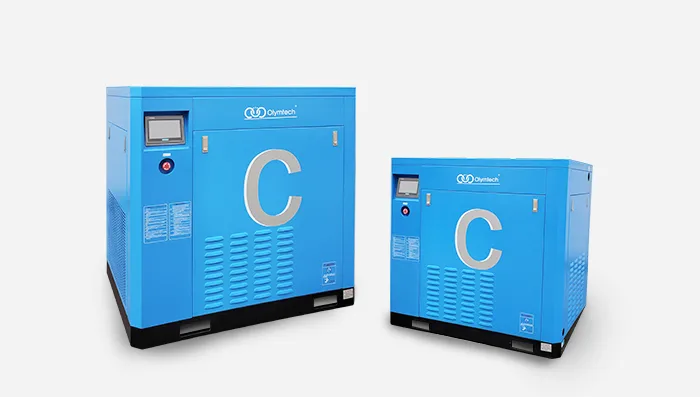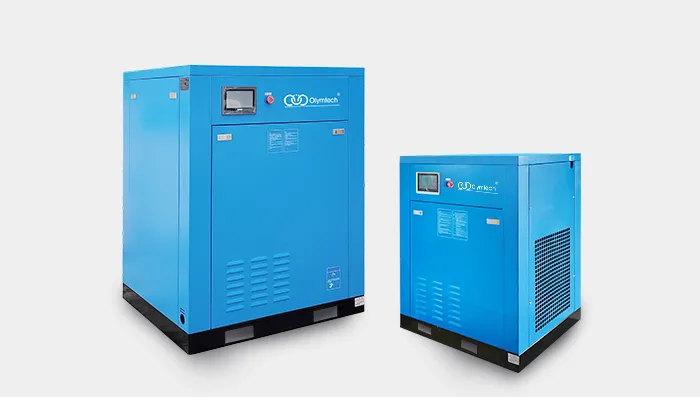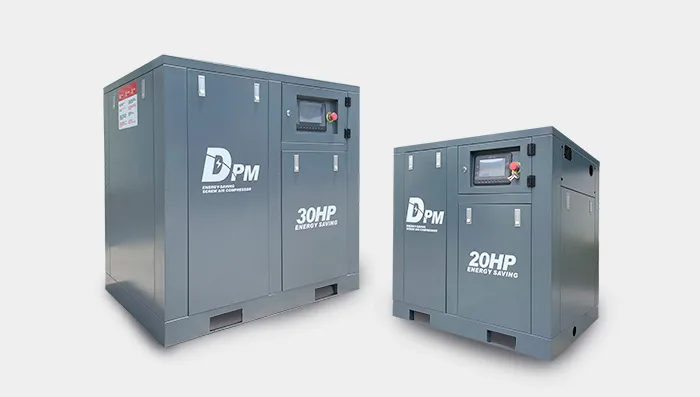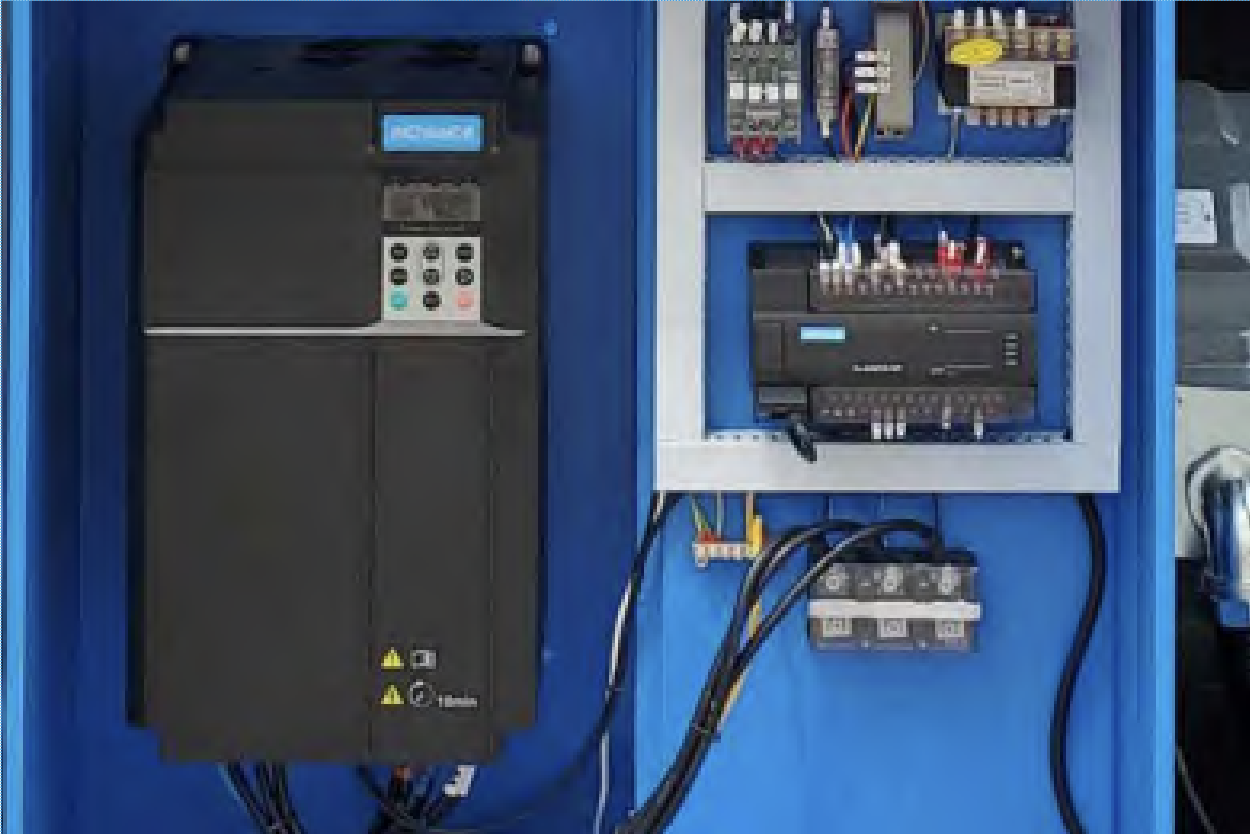A variable speed screw air compressor is a type of industrial equipment designed to produce compressed air. It uses a helical rotor design to compress air and a variable speed drive (VSD) to adjust the motor's speed according to the demand for compressed air. This makes it highly efficient as it can closely match the air supply to the system requirements, reducing energy waste during periods of low demand. Olymtech mainly supplies the following 4 series of Variable Speed Screw Air Compressor : CPM Series, JPM Series, DPM Series and CY Series.
Variable Speed Screw Air Compressors vs. Fixed Speed Screw Air Compressors
Below is a comparison of variable speed screw air compressors and fixed speed screw air compressors across various factors. Make it easy for you to choose the right screw air compressor for your industrial application.
|
1. Operating Principle |
(1) Employs an inverter or controller to adjust the motor speed based on the air demand. |
(1) Operates at a constant speed regardless of the air demand. |
|
2. Energy Efficiency |
(1) More energy-efficient, as it allows for adjustments in air output in line with demand. |
(1) Generally less energy-efficient, particularly during periods of reduced demand. Energy consumption remains high due to constant operation at full capacity. |
|
3. Initial Cost |
(1) Generally higher initial investment due to more advanced technology and components. |
(1) Typically lower initial purchase price and installation costs. |
|
4. Maintenance and Longevity |
(1) May require more specialized maintenance due to complex controls and components. |
(1) Often simpler with fewer moving parts, which can lead to easier maintenance. |
|
5. Noise Levels |
Typically operates more quietly due to its smoother acceleration and deceleration. |
Noise levels can be higher during operation due to the constant on/off cycling. |
|
6. Control and Monitoring |
(1) Offers advanced control features and monitoring options, which can allow operators to track performance and efficiency. |
(1) Generally provides basic control mechanisms and monitoring capabilities. |
Variable speed screw air compressor Energy Saving Solution
|
Smart inverte can save variable speed air compressor 35% energy
|
|
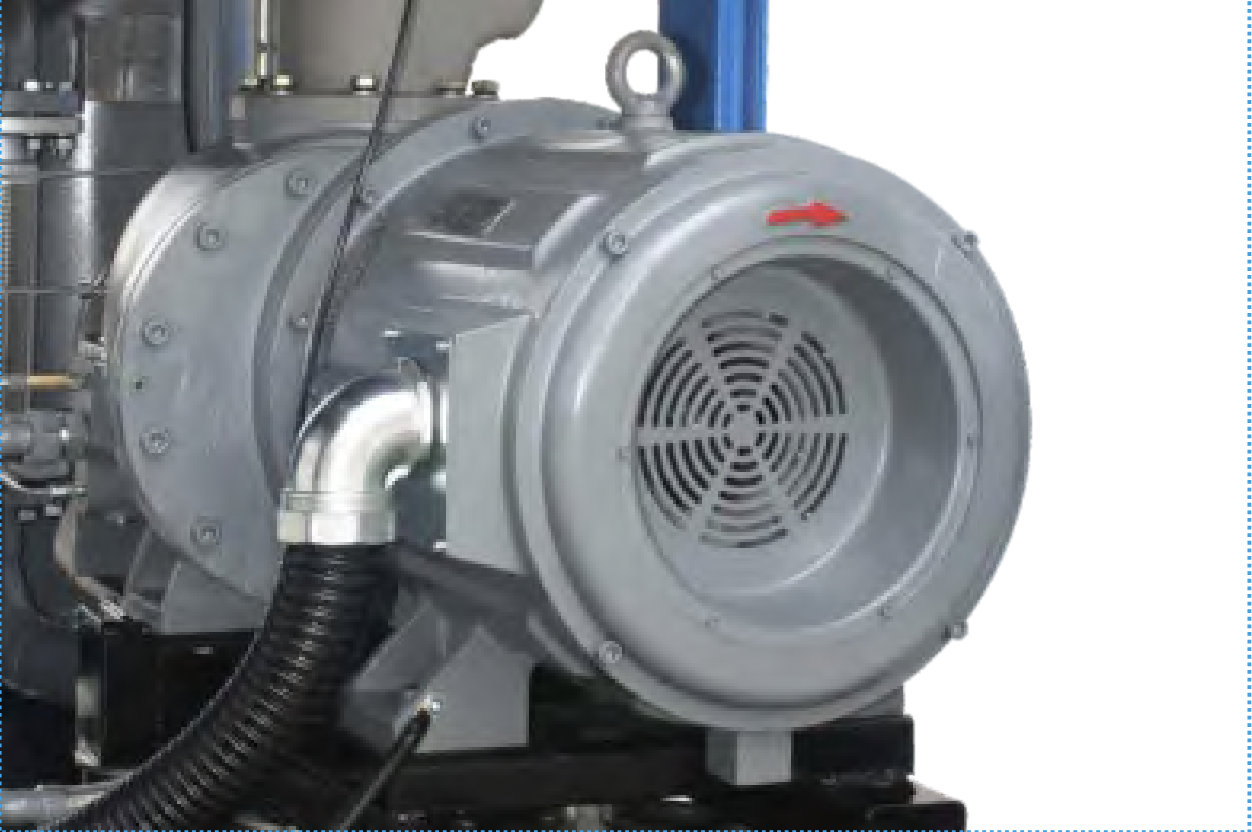
|
Permanent magnet motor
save
energy 2-5%
|
|
No unnecessary pressure
save
energy
3-15%
|
|
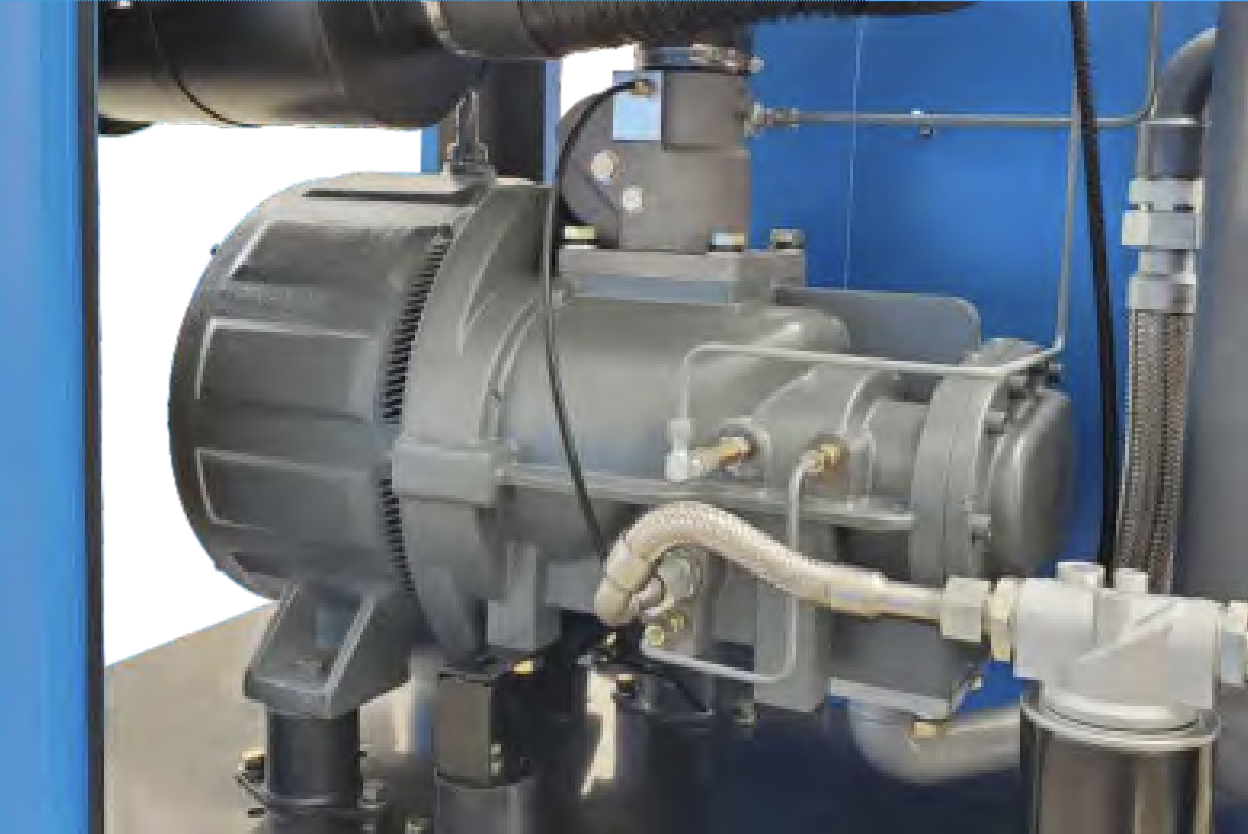
|
Lossless direct drive
save
energy 3-15%
|

 EN
EN
